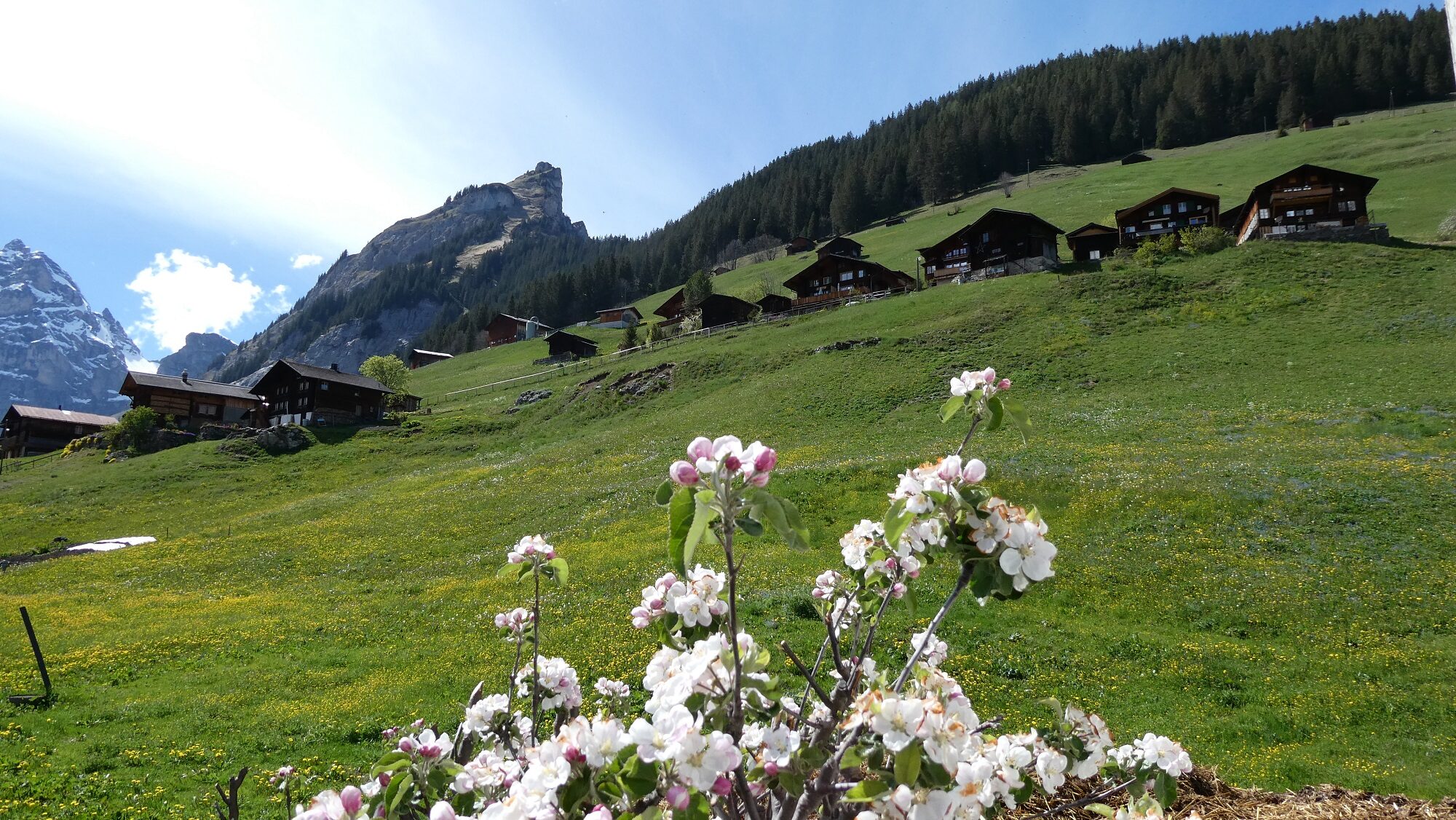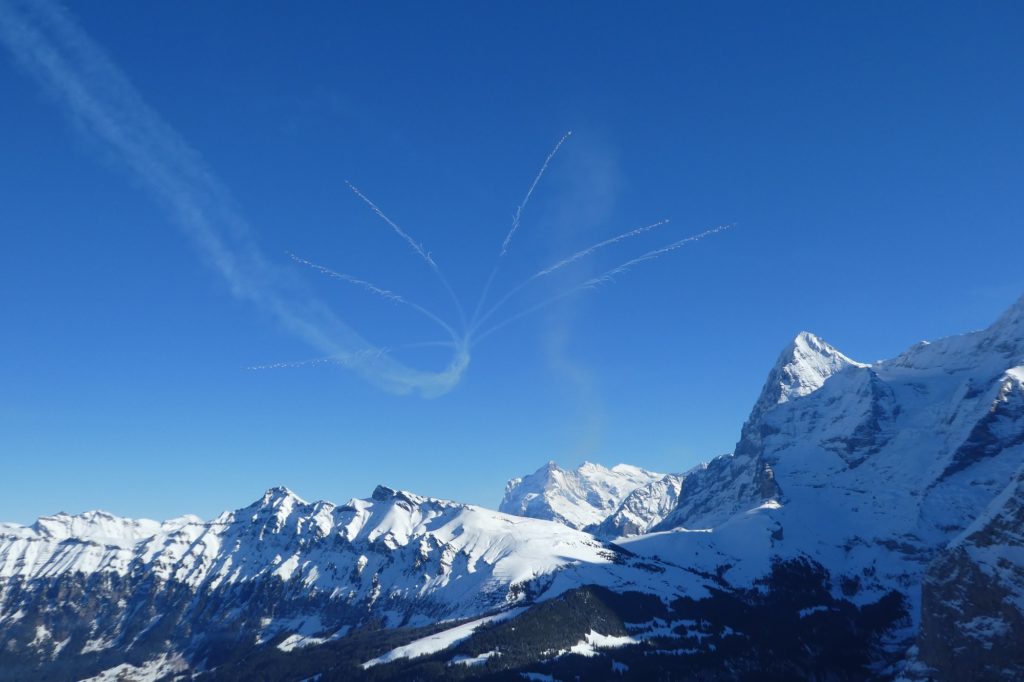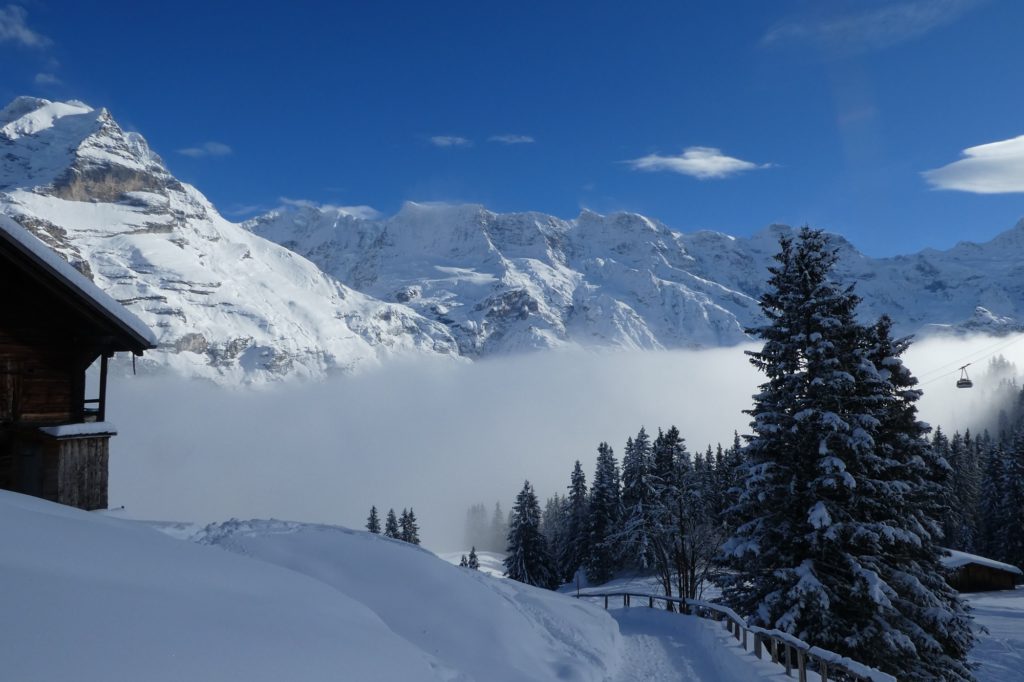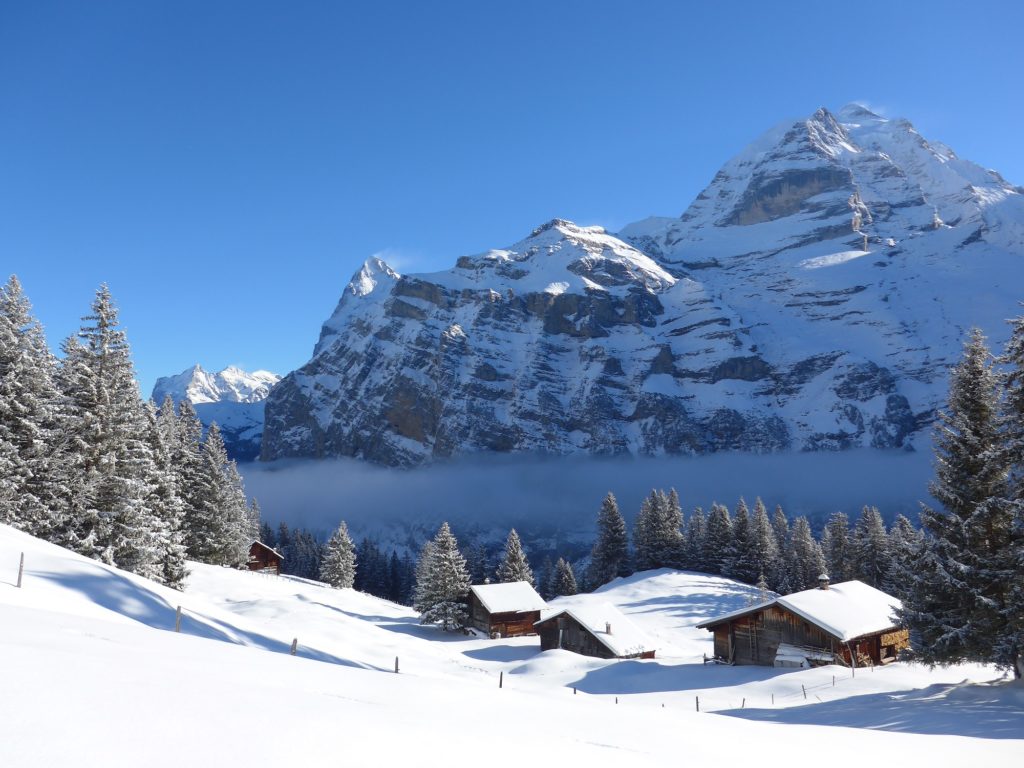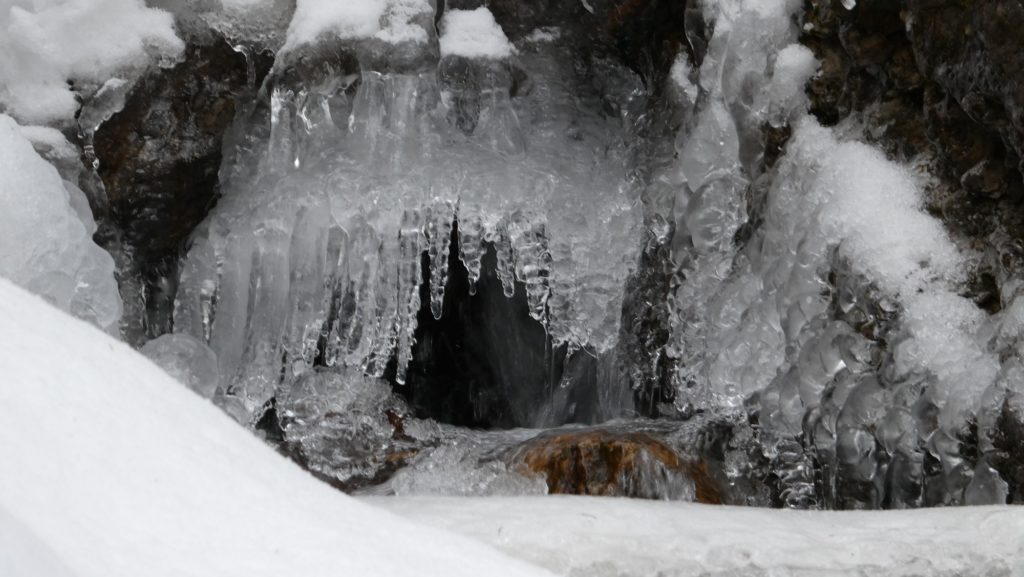The first days of January are often the coldest of the year. Whilst the people of the lowlands are being driven to despair by the fog, we have clear, though cold, winter weather. The sun does shine in the village, but not for long. The first sunrays do not appear until after 11am, only to disappear again behind the mountains just before one o'clock. If you want to be in the sun you have to take the cable car up to the higher mountains. As everyone knows, finances are at a low ebb in January and this is also felt in Gimmelwald. Over Christmas every holiday flat is occupied, but after the first weekend in January our village is calm and peaceful. But the snow situation is often at its best in January. Due to the normally cold temperatures, the snow, especially the fresh snow, is really powdery and the slopes are almost empty. Those who do not ski can enjoy a winter hike. It is romantic to stroll through the Allmiwald in deep snow and climb the Schiltgrat. Above the freshly snow-covered, untouched landscape, lies something magical.
In mid-January the world-famous Lauberhorn Race takes place in Wengen. Lauberhornrennen
One week later Muerrens biggest event, the Inferno Race takes place. Inferno Rennen
At this time, the hotels and holiday flats are fully occupied. Whether or not this is due to the patron saint with horns, has not yet fully been investigated, but for some reason normal skiers suddenly turn into dare devils on the slope. In any case the 15.8km Inferno race is one of the longest and most spectacular in the world. When over 1800 amateur skiers defy death and launch themselves into the race there is plenty of entertainment for the spectators. The first-aid volunteers of Muerren and Gimmelwald together with a doctor and one or two helicopters are on hand should they be needed. Despite the fact that a racer starts every few seconds and overtaking manoeuvres take place on the race track, there are few accidents - the joy of participating and reaching the finish in one piece is the most important thing for most participants.
Most farmers work on the many ski lifts during the day. Of course, the barn has to be taken care of in the evening and in the morning. Farmers of retirement age stay in the village. During the cold season you can see them making wooden poles for the alpine pastures for about a month. From large spruce trunks hundreds of poles are extracted with infinite care. At first the splitting hammer and several wedges help to extract planks from the large trunk. With the axe and the band saw the piles are then sharpened and stored in hundreds of towers. Last year I saw a farmer piling up a thousand piles. In the dry air they have to wait until spring to be used.
